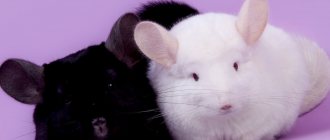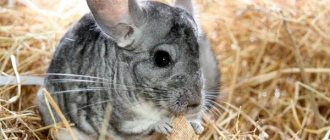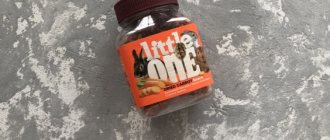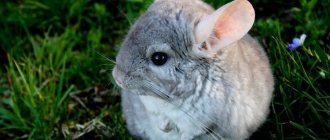- Wild animals
- >>
- Mammals
For many, such an interesting animal as the chinchilla is not at all a rarity; it has long become a common pet. This is no wonder, because these cute fluffy rodents are very attractive and cute. But chinchillas living in the wild are not easy to meet, because there are very few of these animals left, and they live only on one South American continent.
Origin of the species and description
Photo: Chinchilla
It is still unknown who the ancestor of the chinchilla is. Carrying out archaeological excavations in the Cordillera, scientists extracted from the bowels of the earth prehistoric fossils, which in their structure are very similar to chinchillas, only much larger in size. This animal, according to experts, lived forty thousand years ago, so the chinchilla genus is quite ancient. The Incas, many centuries ago, depicted chinchillas on rocks; this painting has survived to this day.
The Incas made various items of clothing from the soft skins of chinchillas, but among the Indians they were far from the first who were so attracted to the fur of rodents. The first who began to wear clothes made from chinchilla skins were the Indians from the Chyncha tribe. It is believed that the chinchilla got its name from them, because the word “chinchilla” itself is consonant with the name of an Indian tribe.
Video: Chinchilla
For the Incas, the value of chinchilla fur was very high; they maintained constant control over their production so as not to harm the animal population. But by the end of the 15th century the situation got out of control, because... The Spaniards who arrived on the mainland began a ruthless hunt for helpless rodents, which led to a rapid decrease in their numbers. The authorities of such South American countries as Chile, Bolivia and Argentina have banned the shooting of animals and their export, and introduced severe punishment for illegal hunting.
The chinchilla is a rodent from the chinchilla family of the same name.
These animals have two varieties:
- short-tailed chinchillas (coastal);
- Chinchillas are large, long-tailed (mountain).
Mountain chinchillas live at high altitudes (more than 2 km), their fur is thicker. This species is distinguished by a hump nose, which is designed for inhaling chilly mountain air. The coastal type of chinchillas is much smaller, but the tail and ears are much longer than those of mountain chinchillas. Officially, the short-tailed chinchilla species is believed to have disappeared completely, although local residents say they have been seen in remote mountainous areas of Argentina and Chile.
It is interesting that the first chinchilla farm was organized by the American Mathias Chapman, who brought the animals to the USA. He began to successfully breed chinchillas in order to sell their valuable fur; many then followed in his footsteps, organizing their own farms.
The Ukrainian Foreign Ministry intends to liquidate the quasi-republics of Donbass
The separatist “LPR” and “DPR” in the occupied territories of Donbass will be liquidated after Ukraine restores constitutional control over them. Now the Ukrainian authorities are considering two decisions regarding Donbass, including both ending the war and returning the territory of ORDLO under Ukrainian control.
Girkin revealed the truth about Donbass illegal armed groups
Russian terrorist and military interventionist Igor Strelkov said that the leaders of the separatist quasi-republics “LPR” and “DPR” are not at all responsible for leading the illegal armed groups of Donbass. The separatist field commander is confident that the leaders of the ORDLO have nothing to do with illegal armed groups at all.
0 May 22, 2021, 20:59
The United States named the conditions for elections in Donbass
The only way to end the armed conflict in Donbass should be the full implementation of the Minsk Treaty, which Russia has been violating from day one. This opinion was expressed by US Deputy Assistant Secretary of State George Kent. Elections can take place when the fire ceases and the occupying forces withdraw.
2 7 May 2021, 14:47
The Kremlin demanded negotiations between Ukraine and ORDLO
The Kremlin once again stated that Ukraine should conduct direct negotiations with the Donbass separatists, since Minsk-2 was signed. According to the press secretary of the Russian President Dmitry Peskov, the Minsk agreements were signed by Ukraine and representatives of ORDLO, and the Russian Federation is allegedly not a party to the conflict.
3 30 April 2021, 15:46
A video conference will be held at the Normandy Format
The heads of the Normandy Four foreign ministries are going to hold a meeting via videoconference. According to preliminary information, the video meeting should take place next week. The heads of several foreign ministries will try to give new impetus to the agreements in December.
3 April 22, 2021, 21:09
Russia wants to distribute passports to residents of Donbass
The aggressor state intends to make additional concessions in order to accelerate the distribution of passports to residents of certain areas of the Donetsk and Lugansk regions. Today, Russian documents for residents of uncontrolled territories cost fifty dollars.
Appearance and features
Photo: Long-tailed chinchilla
Long-tailed chinchillas are very small, their body grows no more than 38 cm in length. The length of the tail varies from 10 to 18 cm. Long rounded ears reach 6 cm in height. Compared to the body, the head is quite large, the muzzle is round with cute large black eyes, the pupils of which are located vertically. The animal's whiskers (vibrissae) are long, reaching up to 10 cm; they are necessary for orientation in the dark. The weight of an adult rodent is less than a kilogram (700 – 800 g), the female is larger than the male.
The fur coat of the animals is pleasant, fluffy, soft, with the exception of the tail, which is covered with bristly hairs. The color of the fur is usually gray-blue (ashy), the belly is light milky in color. Other colors can be found, but they are rare.
A chinchilla has only 20 teeth, 16 of them are molars (they continue to grow throughout life). Compared to other numerous rodents, chinchillas can be called long-livers; these cute animals live up to 19 years. The chinchilla's paws are small, the animal has 5 fingers on the front limbs, and four on the hind limbs, but they are much longer. Pushing off with their hind legs, chinchillas perform long, deft jumps. The coordination of the animal can be envied; possessing a highly developed cerebellum, the chinchilla skillfully conquers rocky massifs.
An interesting biological feature of the rodent is its skeleton, which is capable of changing its shape (shrinking) if the situation requires it. At the slightest threat, a chinchilla will easily slip into even a tiny crevice. Also, one of the unique features is that the animal does not have sweat glands, so it does not emit any odor at all.
Biology
The biology of chinchillas in natural habitats has been little studied; basic data on behavior, reproduction, and physiology are obtained in artificial conditions. Most of the data relates to long-tailed chinchillas due to their mass breeding in captivity.
The chinchilla's head is round in shape and its neck is short. The body length is 22-38 cm, the tail is 10-17 cm long and covered with hard guard hairs. Chinchillas are characterized by sexual dimorphism: Females are larger than males and can weigh up to 800 grams; The weight of males usually does not exceed 700 grams. Chinchillas are adapted to night life: large black eyes with vertical pupils, long (8-10 cm) whiskers, large rounded ears (5-6 cm). The chinchilla's skeleton is capable of compressing in a vertical plane, which allows animals to penetrate narrow crevices in rocks. The forelimbs are five-fingered, with four grasping fingers and one little used. The hind limbs are four-toed, one toe is turned back. Strong hind limbs are twice as long as the front ones and allow high jumps, and a highly developed cerebellum provides good coordination of movements necessary for safe movement on rocks. Chinchilla Brevicaudata
It is distinguished by its larger size, wide head, small bluish ears and short tail.
Chinchillas are omnivores. Their diet is based on various herbaceous plants, mainly cereals, legumes, also seeds, mosses, lichens, shrubs, tree bark, and small insects.
The result of living in a cold mountain climate is thick and warm fur. Chinchillas hold the record for fur density among animals - there are more than 25,000 hairs per square centimeter of skin. Such a high density is ensured by the unusual structure of the fur: 60-80 very fine hairs grow from each hair follicle. Chinchillas do not have hard guard hairs; down hairs are only 12-16 microns thick, covering hairs are 24-28 microns thick and are 4-8 mm longer than down hairs. Chinchilla fur is so dense that it cannot harbor parasites common to other fur-bearing animals. Chinchillas do not have sweat and sebaceous glands; when they get into water, their fur immediately gets wet and the animal cannot stay on the surface. To get rid of moisture, remove lost hair and clean fur, chinchillas regularly bathe in volcanic ash and fine dust.
The general composition and structure of chinchilla teeth are characteristic of many rodents. Chinchillas have 20 permanent teeth. Each half of the jaw has one incisor ( Dens incisivus
,
I
), all four incisors are covered with dark orange enamel.
The canines ( Canini
) are not developed.
Next in each half of the jaw there is one small molar - a premolar ( Praemolar
,
P
) and three molars (
Molar
,
M
). The right and left half-jaws are mirror symmetrical, so usually only one side is depicted. All teeth are rootless and grow throughout life.
Reproduction
Chinchillas are mostly monogamous. The mating season occurs between November and May in the northern hemisphere and between May and November in the southern hemisphere. The female usually gives birth to two litters per year, 1-5 (usually 2-3) cubs in each. The pregnancy of a long-tailed chinchilla lasts from 110 to 118 days (short-tailed - 128 days). Chinchillas are born well developed, with open eyes. They are completely covered with fur and weigh up to 70 grams. The lactation period lasts 6-8 weeks; at about 2 weeks from birth, chinchillas begin to try adult food (first hay). Young individuals reach sexual maturity at approximately 8 months; chinchillas of some rare colors mature later than their peers of standard or beige color. Chinchillas bear offspring for 8 years, their life expectancy in natural conditions is about 10 years, and at home it can be more than 20 years.
Where does the chinchilla live?
Photo: Animal chinchilla
As already mentioned, the only continent where chinchillas are permanently registered in the wild is South America, or more precisely, the Andes and Cordillera mountain ranges. Animals are distributed from Argentina to Venezuela. The highlands of the Andes are the element of chinchillas, where they climb to heights of up to 3 km.
Little fluffies live in rather harsh, spartan conditions, where cold winds rage almost all year round; in the summer, the daytime temperature does not exceed 23 degrees plus, and winter frosts drop to -35. Rainfall in this area is very rare, so chinchillas avoid water procedures; they are completely contraindicated for them. After all, once wet, the animal will be chilled to the very bones. Rodents prefer to clean their coats by bathing in sand.
Typically, a chinchilla makes its lair in all sorts of small caves, rocky crevices, and between stones. Occasionally they dig holes in order to hide from various predatory ill-wishers. More often, chinchillas occupy abandoned burrows of other animals to live. In the wild, it is possible to meet a chinchilla with your own eyes only in Chile. In other countries there are so few of them that it is not possible to see rodents. And in Chile their population is under threat.
Natural habitat
The homeland of chinchillas is South America. Short-tailed chinchillas live in the Andes of southern Bolivia, northwestern Argentina and northern Chile. The long-tailed chinchilla is currently found only in a limited area of the Cordillera in northern Chile. Approximately half of the total wild population is in fenced reserves, with about 5,000 individuals living in private, unprotected areas.
The natural habitat of chinchillas is desert uplands, rocky areas at an altitude of 300 to 5000 meters above sea level. Chinchillas settle in niches between stones, rock crevices, small caves, preferring northern slopes; In the absence of natural shelters, they dig holes on their own.
What does a chinchilla eat?
Photo: Chinchilla animal
The chinchilla's preference is plant food, which in the Andes mountains is quite scarce and monotonous.
The main rodent menu includes:
- herbs;
- small bush growth;
- cactus plants (succulents);
- mosses and lichens.
Animals receive moisture from dew and cactus plants, which are very juicy and fleshy. Chinchillas can eat the bark, rhizomes of plants, their berries, and do not disdain various insects. At home, the chinchilla menu is much more varied and tastier. People buy special grain feeds at pet stores. Animals love to eat not only fresh grass, but also various fruits, berries, and vegetables. Chinchillas will not refuse a crust of bread, dried fruits and nuts. Rodents eat hay in large quantities. The diet of chinchillas is very similar to the diet of hares or guinea pigs.
Under natural conditions, chinchillas do not experience any special problems with the intestines and stomach. Although they eat a large amount of green vegetation, some contain a lot of tannins, which help food to be digested normally. Scientists have noticed that in the mountains, next to chinchillas, chinchilla rats live, which make storage rooms with food in their burrows. Chinchillas also constantly use these reserves, eating the food of their prudent and thrifty neighbors.
Classification
The family includes 3 genera.
- Genus Chinchilla rat ( Abrocoma
) Bennett's chinchilla rat (
Abrocoma bennettii
) - Bolivian chinchilla rat ( Abrocoma boliviensis
) - Abrocoma budini
- Abrocoma famatina
- Ashy chinchilla rat ( Abrocoma cinerea
), or gray chinchilla rat[1] - Abrocoma schistacea
- Peruvian chinchilla rat ( Abrocoma uspallata
) - Abrocoma vaccarum
- Genus Cuscomys
Peruvian chinchilla rat ( Cuscomys ashaninka
)
Chinchilla rats are rare animals, although they are not a protected species. Sometimes they are hunted for their skins, although they are fragile and of little value.
Features of character and lifestyle
Photo: Big chinchilla
Not much is known about the temperament and life activity of chinchillas in natural conditions. Apparently because they are difficult to meet due to their small number. Many observations are made specifically on tamed animals living at home. Chinchillas are collective rodents; they live in packs, in which there are at least five pairs, and sometimes many more. This group life helps them better cope with various dangers and enemies. There is always an individual in the flock that observes the environment while others feed. At the slightest threat, this animal signals to others about the danger by making an unusual whistling sound.
Rodents are most active at dusk, when they emerge from their hiding places to explore areas in search of food. During the day, the animals almost never leave their holes and crevices, resting in them until the evening. Chinchillas' eyes are adapted to the dark and see just fine both at night and during the day. They are helped to navigate in space by their long and very sensitive whiskers, which, like navigators, direct them in the right direction, where food is available. Don’t forget about the big ears, which, like locators, pick up any suspicious sounds. The vestibular apparatus of animals is also well developed, so they easily overcome any mountain peaks and obstacles, moving quickly and deftly.
An interesting and unusual fact is that the head of the chinchilla family is always the female; she is the undisputed leader; it is not for nothing that nature has endowed her with larger dimensions compared to males.
Animals practically never see rain; in the regions where they live, such precipitation is very rare. Chinchillas bathe and clean their fur with volcanic sand, so rodents get rid of not only foreign odors, but also all kinds of parasites that live in their fur. An extraordinary feature of the chinchilla is the ability to shoot out its own fur, like a lizard with its tail. Apparently, this helps them in some situations to escape from predators. The predatory animal grabs the chinchilla’s fur, and a piece of it remains in its teeth, while the rodent runs away.
If we talk about the character of these sweetest creatures, it can be noted that domesticated chinchillas are affectionate and good-natured, and easily make contact with humans. The animal is very smart, it is easy to train it to the tray. Still, you can notice that chinchillas have a freedom-loving and independent disposition; you shouldn’t force the animal to do anything; it may get offended and not communicate. Rodents bite very rarely, only in extreme cases. Of course, each animal is individual, has its own characteristics and habits, and therefore the characters also differ.
Interesting Facts
- These rodents have a well-developed cerebellum, which helps coordinate the movements of the animals. Therefore, they deftly cope with climbing rocks and other obstacles even at night.
- The chinchilla's whiskers - vibrissae - are also well developed. With their help, the animal gropes for food in the dark and hard-to-reach places.
- Chinchilla ears can detect an enemy at a fairly large distance.
- The animal's fur is unique - it is able to maintain the desired body temperature when the weather changes.
- Animals can reject fur if a predator grabs it. The new cover grows in a couple of months. The thick undercoat prevents parasites from settling on the animal’s body.
- Male chinchillas are easier to tame. The female can be offended if she is not the one picked up first.
- These animals are very clean. The animal does not make a toilet near the feeder and water bowl, and its feces do not emit an unpleasant odor.
- There is also no unpleasant odor from the animals themselves, since they do not have sweat glands on their bodies.
- Chinchillas are easy to train. Simple commands “sit” and “stand” can be mastered by any animal.
- They are nocturnal animals, so they sleep most of the day. No matter how much a chinchilla sleeps during the day, you cannot wake it up!
Social structure and reproduction
Photo: Chinchilla in nature
So, it was already said earlier that chinchillas are social animals that prefer to live in a group, in which they form their pairs. These rodents are monogamous, their unions are quite strong and long-lasting. The undisputed leading position in the family is occupied by the female. The female is ready for procreation already at six months of age, and males mature longer, becoming sexually mature only by 9 months. Chinchillas give birth several times a year (2 – 3).
The pregnancy period lasts for three and a half months. A pregnant female gains significant weight, and as birth approaches, she generally becomes inactive. Usually only one or two babies are born, very rarely – three. Tiny creatures that are already quite formed and look like their parents are born. From birth, the cubs already have a fluffy coat, sharp teeth and keen, curious eyes; they even know how to move.
Babies weigh from 30 to 70 g, it depends on how many of them were born. After just one week from the moment of birth, babies begin to try plant food, but continue to receive mother's milk until they are two months old. Chinchilla mothers are very caring and affectionate towards their children. These rodents are considered low-bearing, compared to their other relatives. In addition, the birth rate of young females is another 20 percent lower than that of experienced individuals. One chinchilla can usually give birth to up to 3 babies per year.
Natural enemies of chinchillas
Photo: Female chinchilla
Chinchillas have enough enemies in the wild, because every larger predator is not against eating such a small animal. Scientists single out the fox as the main enemy. This predator is much larger than a chinchilla and is very patient. A fox cannot get a chinchilla out of a narrow crevice or hole, but she can tirelessly wait for her prey at the entrance to her shelter for hours. In the wild, these rodents are saved by their camouflage coloring, excellent reaction speed, speed of movement and their compressible skeleton, thanks to which the rodents will penetrate any narrow gap where predators cannot get through.
In addition to the fox, the enemy of the chinchilla can be an eagle owl, an owl, a tayra, an owl, and a viper. Tyra is the most sophisticated enemy, she is similar to a weasel. This predator, having a resourceful body, can sneak right into a chinchilla’s hole or other shelter, catching the victim by surprise. Feathered predators can catch a chinchilla in an open, unprotected area.
Chinchillas have many ill-wishers, but the most merciless of them is the person who continues to poach, destroying cute little animals for their valuable fur coat.
In addition to all of the above, animals are negatively affected by the deterioration of the ecological situation, which is also associated with human activities.
Here you can name:
- soil contamination with chemical compounds;
- depletion of soil and food supply due to livestock grazing;
- disturbances in the atmosphere due to the release of greenhouse gases.
People sometimes think only about their own benefit and well-being, completely forgetting about their smaller brothers, who need, if not support, then at least human non-interference in their life activities.
Population and species status
Photo: Chinchilla
As scary as it sounds, the chinchilla population in the wild is in danger of extinction. There is disappointing data that over the past 15 years the animal population has decreased by 90 percent. In 2018, scientists counted only about 42 colonies living on the South American continent. They believe that this number of animals will not be enough for their population to increase in the future.
If you know how much a chinchilla fur coat costs, and this is more than $20,000, then it will become clear why this animal was so mercilessly exterminated. It is also necessary to take into account the fact that for one fur coat you will need at least 100 skins.
Europeans began trading chinchilla skins back in the 19th century. The fact that more than seven million skins were exported from the territory of Chile in the period from 1828 to 1916 is terrifying, and in total, 21 million animals were exported and destroyed. It’s scary to even think about such huge quantities! Measures were taken by the government only in 1898, when a ban on hunting and export was introduced, but apparently it was too late.
Is it worth starting
There is no clear answer to the question of whether it is worth keeping a chinchilla as a pet or not. Here everyone must make a decision based on their own preferences.
For example, a chinchilla is ideal for busy people. The pet will not require increased attention and will feel quite good in the absence of the owner. For those for whom constant close contact with the animal is important, it is better to avoid buying a chinchilla.
Families with small children are also better off not getting a chinchilla. Firstly, the child will not be able to play with a furry friend, like with a cat or dog. Secondly, the pet will interfere with the baby’s restful sleep.
Otherwise, the chinchilla is considered an excellent pet. It is easy to care for a fluffy dog; food and filler are slowly consumed during the maintenance process, and with the right approach, it is quite possible to establish a close psycho-emotional connection with your pet. The main thing is to be patient and show the animal your sincere love.











